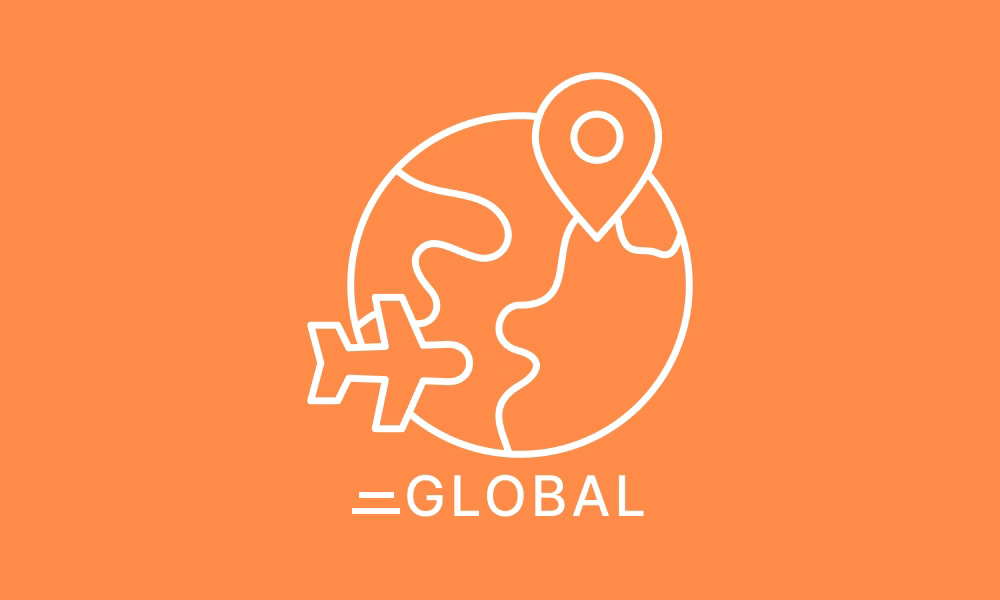Flying International With New Dividends!
Today we added international exposure with SCHD's little sister, SCHY.
Total Portfolio: $56,727
Day 173 | $21,869 (Fidelity)
Day 539 | $34,670 (Ally)
Today, I’m excited to share my latest addition to the Walk to Wealth portfolio: the Schwab International Dividend Equity ETF (SCHY). If you’ve been following my journey, you’ll recall last week’s deep dive into SCHD, Schwab’s flagship U.S. dividend ETF.
Now, let’s cross borders and explore SCHY—a fund designed to bring global dividend stability to your portfolio while mirroring SCHD’s disciplined strategy with an international twist.
Whether you’re new to investing or looking to broaden your horizons, this post will unpack why SCHY deserves a spot in your portfolio and how it complements its big sis.
Why International Exposure Matters for Dividend Investors
The idea of investing internationally might feel daunting. I know it does for me at least! However, diversification can reduce risk and unlock opportunities in markets that operate on different economic cycles. While U.S. stocks have outperformed in recent years, international markets often offer higher dividend yields and exposure to industries underrepresented in the U.S., such as global healthcare giants or European energy leaders.
SCHY provides access to 25 countries, with the United Kingdom (14.65%), Australia (12.11%), and France (11.94%) leading the allocation. This spread ensures that your dividends aren’t tied to a single economy. For instance, during periods when the U.S. market stagnates, robust performances from sectors like European utilities or Asian telecommunications could stabilize your returns.
But… the real reason, is the dividends!
SCHY vs. SCHD: A Strategic Pairing
SCHY and SCHD share DNA: both track dividend longevity, financial health, and profitability. SCHD’s U.S. focused portfolio has delivered consistent dividends, but SCHY broadens the horizon by targeting international companies with similar makeup. Here’s how they stack up:
Key Similarities
Dividend Quality Screens: Both ETFs require a 10-year dividend history and evaluate metrics like cash flow-to-debt ratios to ensure sustainability.
Dividend Growth Focus: They prioritize companies with a track record of increasing payouts over time, not just high current yields. For example, SCHD’s holdings have grown dividends by 11% annually over the past decade, while SCHY’s younger portfolio has already delivered 9%+ yearly growth since its 2021 launch. (And has an impressive 35% 3-year growth rate!)
Low Costs: SCHY’s expense ratio (0.14%) is slightly higher than SCHD’s (0.06%), but both remain very cost-effective compared to active funds.
Strategic Differences
Global Reach: SCHY’s top holdings include Swiss pharmaceutical titan Roche Holding (4.50%), French energy leader TotalEnergies (4.27%), and British consumer goods giant Unilever (3.67%). These companies offer exposure to sectors less prominent in SCHD, such as European healthcare and utilities.
Yield vs. Growth Balance: SCHY’s 4.36% forward yield outpaces SCHD’s 3.76%, but SCHD’s longer dividend growth history more than makes up for the difference.
Risk Management: SCHY adds a volatility screen to its selection process, favoring stocks with lower price swings—a nod to the inherent risks of international markets.
A Closer Look at SCHY’s Top Holdings
SCHY’s portfolio of 100ish stocks is a curated mix of global dividend aristocrats. Let’s look at a few of it’s top holdings:
Roche Holding AG (4.50%): This Swiss healthcare leader dominates oncology and diagnostics, with a dividend streak spanning decades. Its steady cash flows make it a defensive anchor during market downturns.
Vinci SA (4.30%): France’s largest construction and concessions company benefits from infrastructure spending across Europe. Vinci’s toll roads and airports generate reliable, long-term income.
TotalEnergies SE (4.27%): A French energy major transitioning toward renewables, TotalEnergies balances fossil fuel dividends with investments in sustainable projects—a play on both income and future growth.
Unilever PLC (3.67%): This British-Dutch conglomerate owns iconic brands like Dove and Ben & Jerry’s. Its global consumer base provides stable dividends, even during economic slowdowns.
Novartis AG (3.52%): A Swiss pharmaceutical giant with treatments ranging from heart disease to cancer. Its 26-year dividend growth streak showcases its commitment to shareholders.
BHP Group Ltd (3.83%): Australia’s mining powerhouse profits from global demand for copper and iron ore, linking your portfolio to cyclical economic rebounds.
These companies exemplify SCHY’s focus on durable cash flows and global leadership.
Why SCHY May Fit in Your Portfolio
For those starting their investment journey or looking to broaden their horizons, SCHY simplifies international exposure. Here’s why it’s beginner-friendly:
Instant Diversification: One purchase grants ownership in 134 companies across developed markets, eliminating the need to research individual foreign stocks.
Dividend Growth on Autopilot: Both SCHY and SCHD automatically prioritize companies that raise payouts, meaning your income grows without requiring constant monitoring.
Lower Volatility: The fund’s screens for stable stocks help cushion against the sharper swings often seen in emerging markets.
The Wrap Up: Building a Global Dividend Foundation
Just as SCHD anchors my U.S. equity exposure with its proven dividend growth, SCHY opens doors to international markets where younger dividend growers thrive. Together, they ensure my income streams aren’t bound by a single economy or growth phase.
For me, this pairing offers a “best of both worlds” (Get it?) approach: SCHD’s reliability and SCHY’s global potential. Over time, their combined dividend growth can turn modest investments into powerful income engines.
Happy investing, and here’s to walking toward wealth—one global step at a time!
Until next time, keep walking!
Jeremy ✌️
And before you leave…
Disclaimer
This article is for informational and educational purposes only. I am not a financial advisor, broker, or tax professional. The information provided reflects my personal opinions and experiences as an individual investor and may not be accurate or current. All investment strategies and investments involve risk of loss. Any ideas presented may not be suitable for all investors and may not take into account your specific investment objectives, financial situation, or needs. Past performance is not indicative of future results. Always conduct your own due diligence and consult with qualified financial professionals before making any investment decisions.





